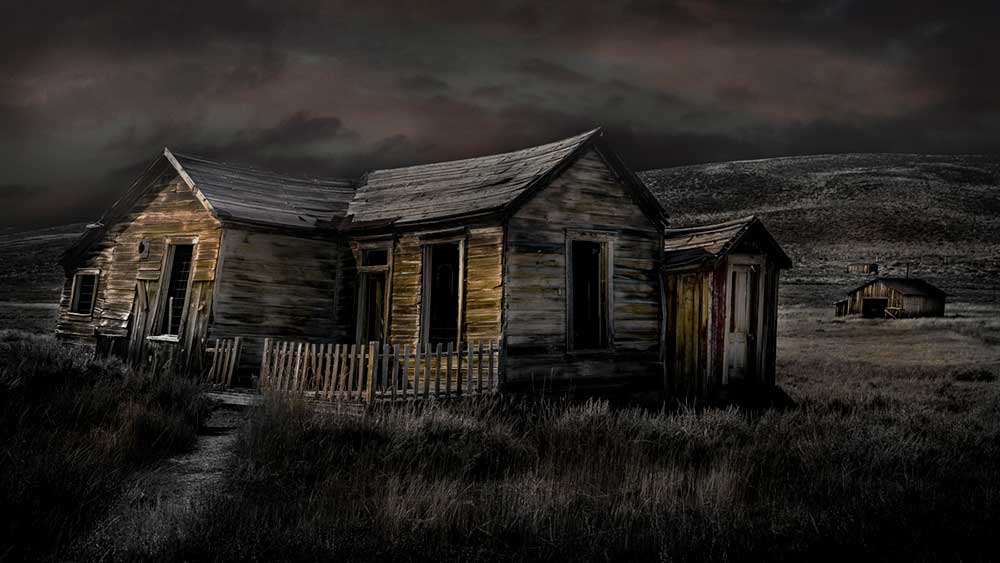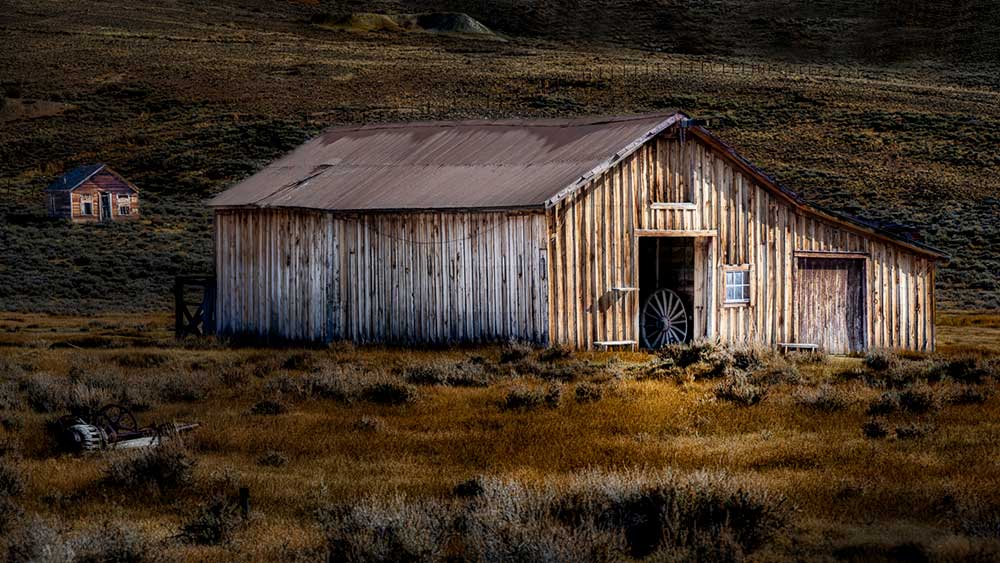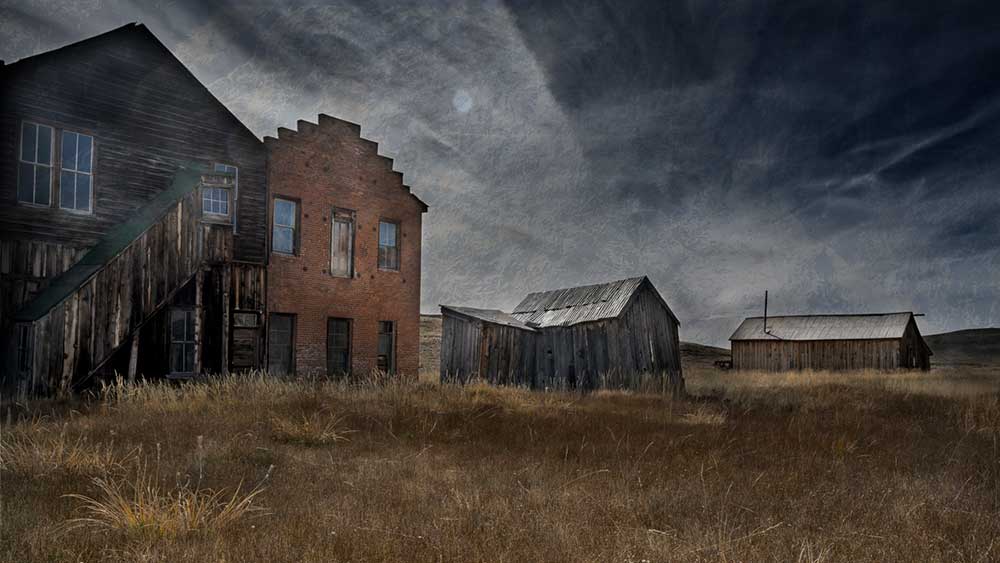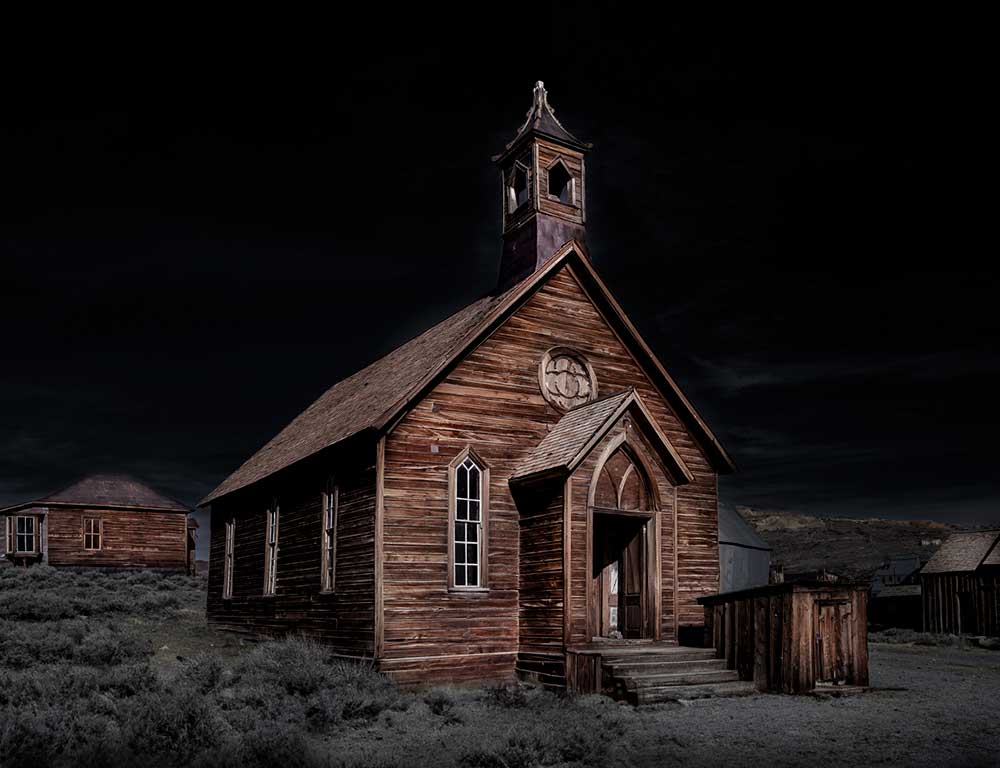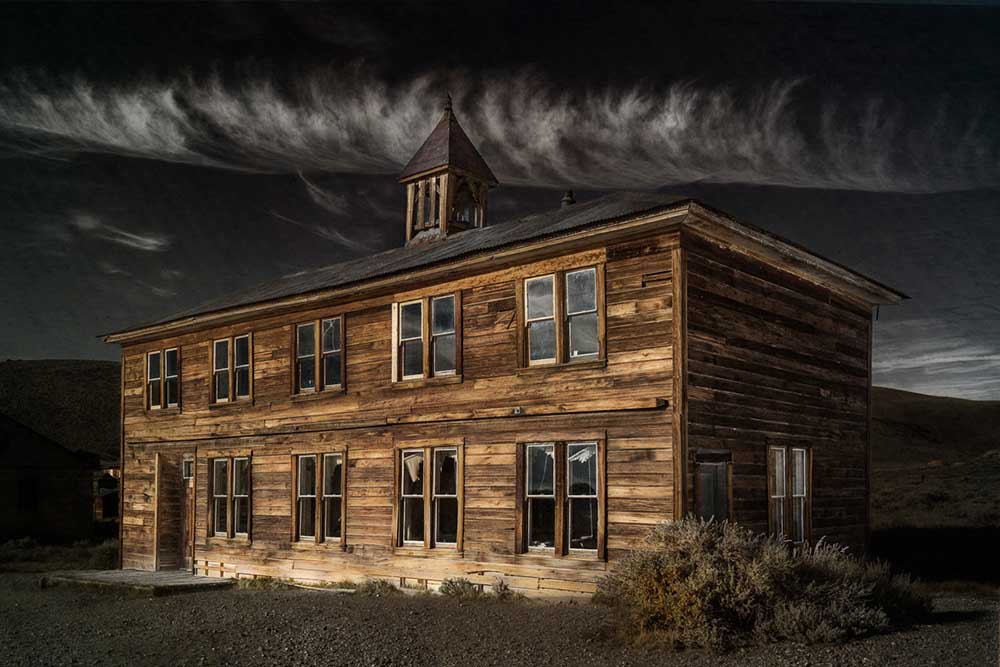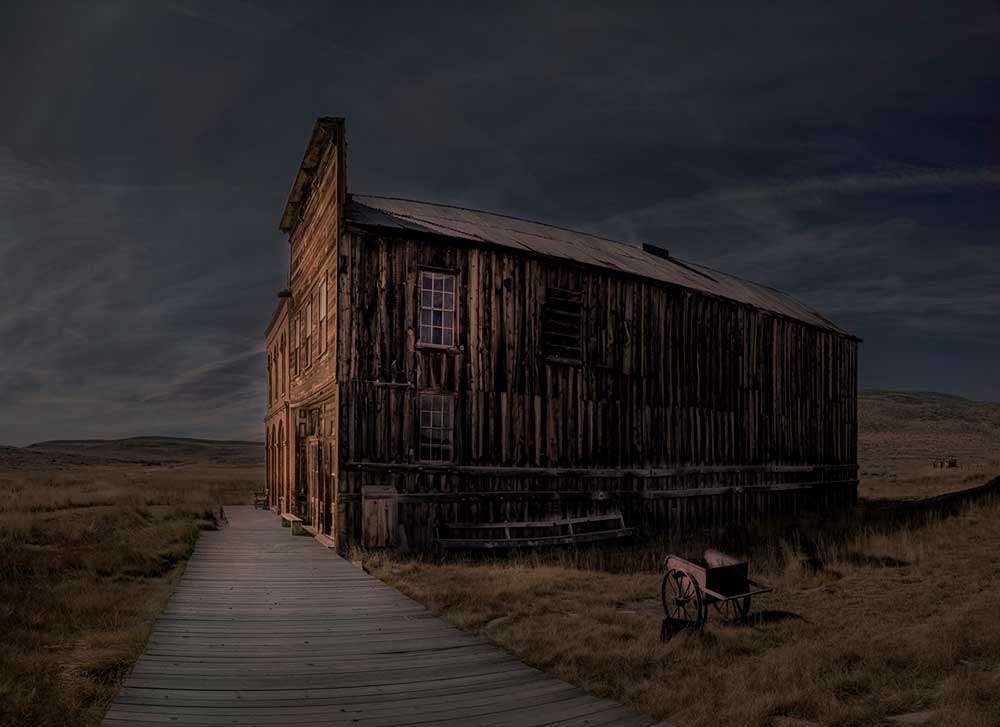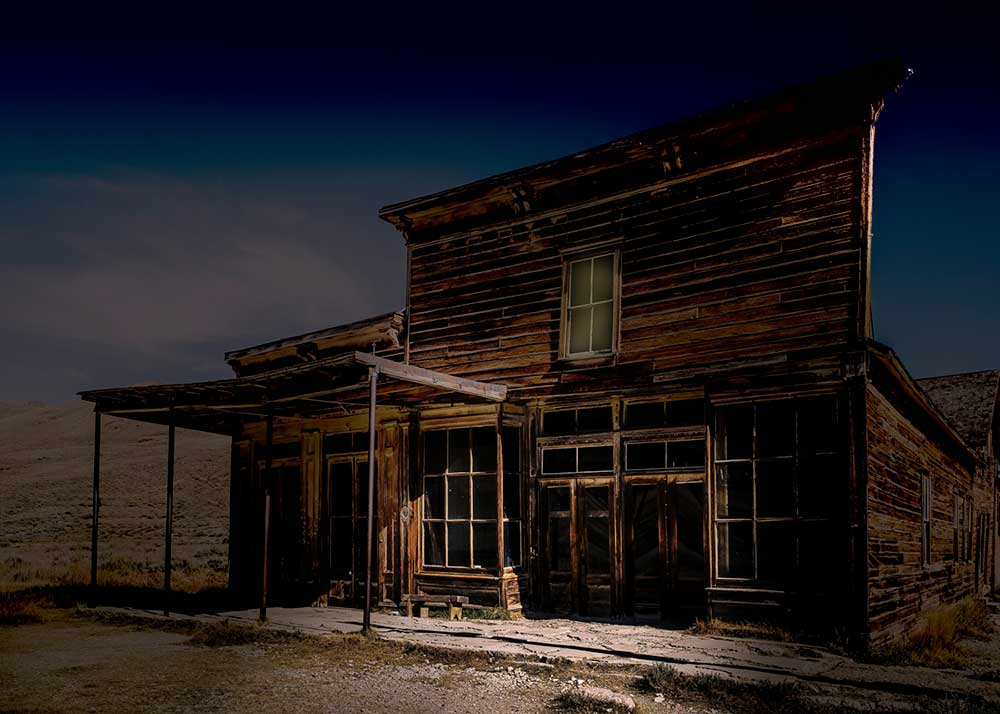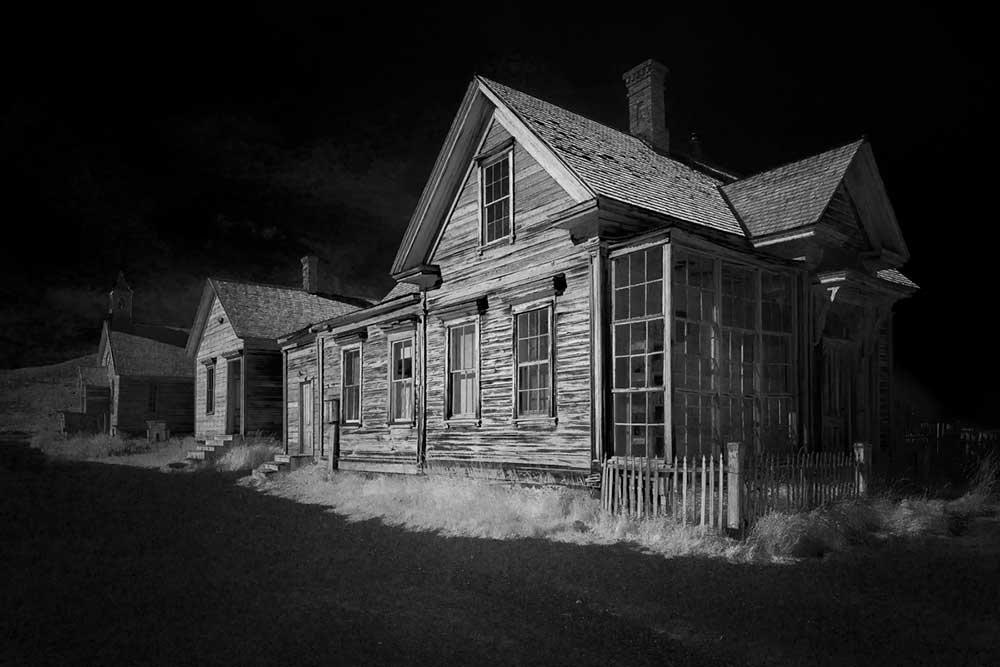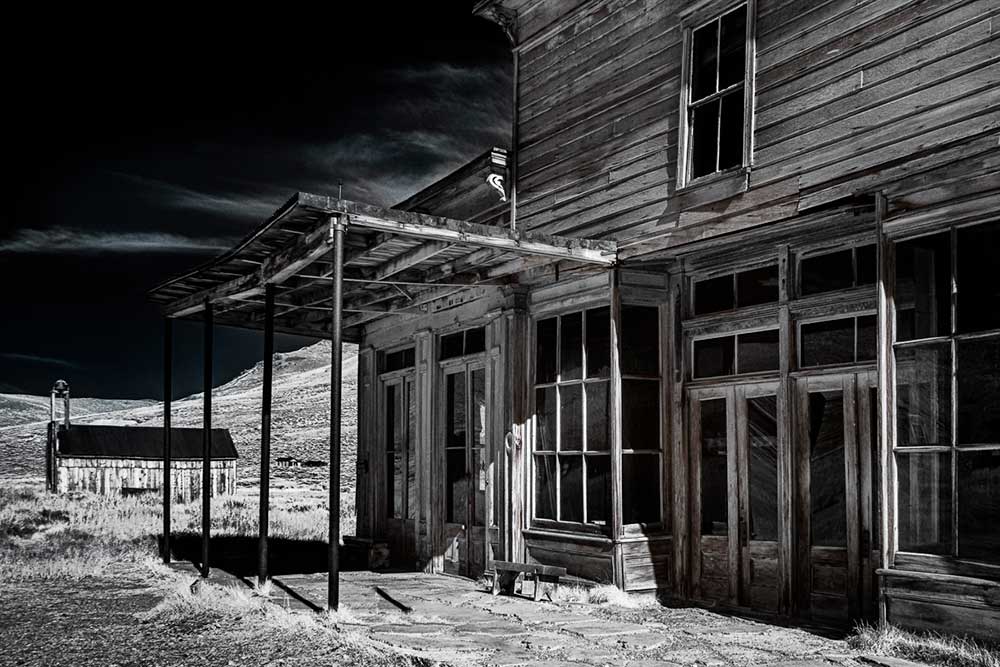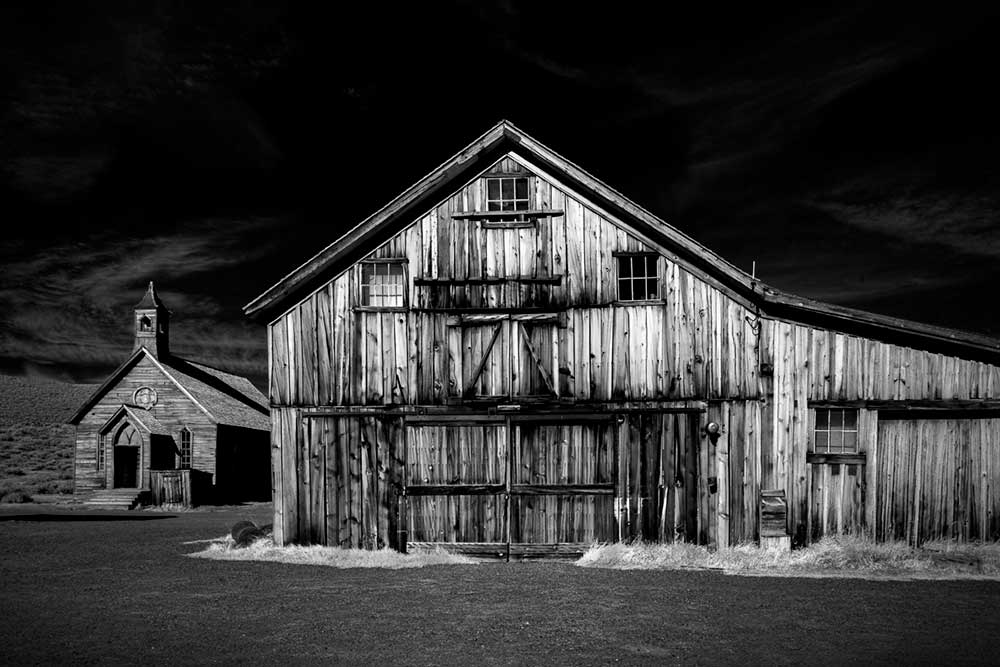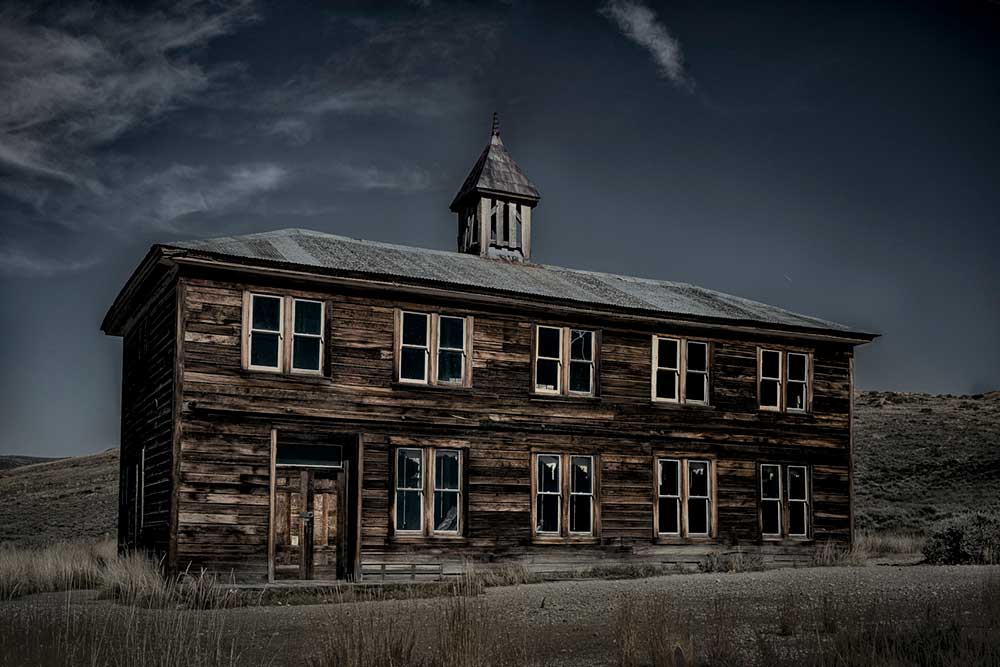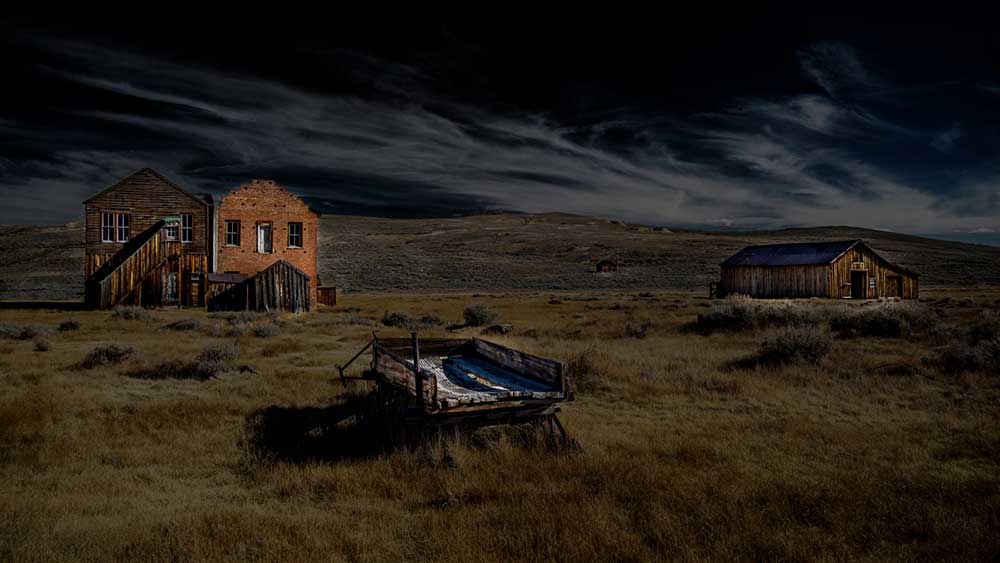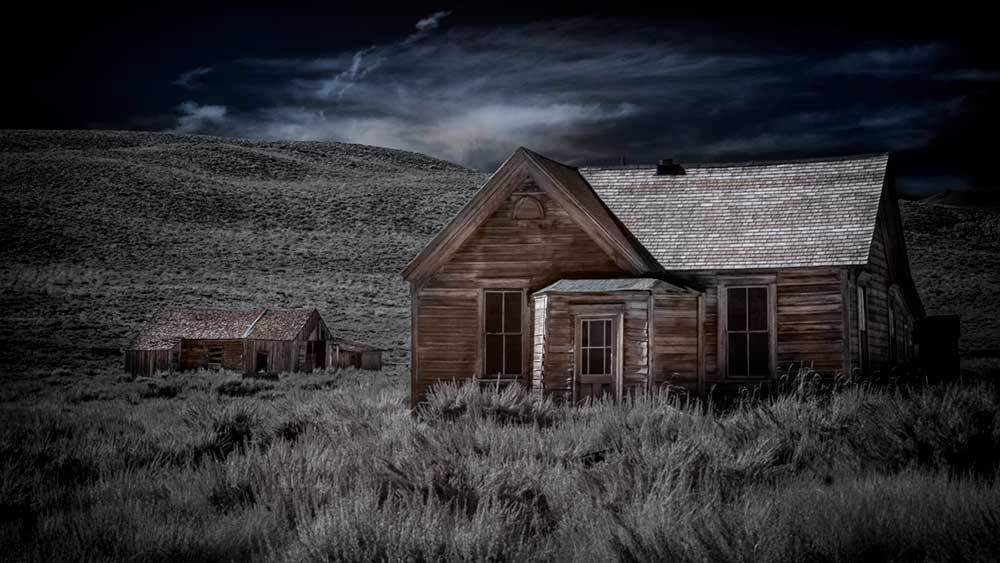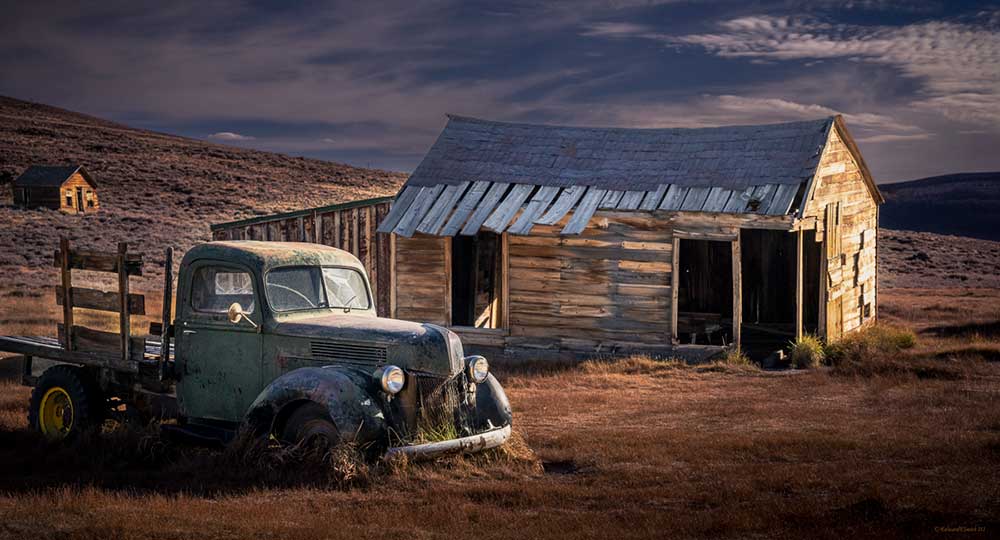In the heartlands of the California-Nevada border, remnants of the 19th-century gold rush era lie scattered across the high-desert valleys. As a fine art photographer, I have ventured multiple times into this rugged landscape to document these historic structures, remnants of a once thriving era.
Walking the streets of these ghost towns and peering into the windows of these abandoned buildings is to be transported back in time to when these places were thriving mining towns. This project is a journey through time, exploring abandoned buildings that were once homes and hubs of communities during the late 1800s gold rush.
The Eastern Sierras present a unique tableau of America’s past. Here, in this harsh yet beautiful terrain, the ambitious dreams of early settlers, many from Europe, materialized in the form of modest buildings. They traveled from the Old World or the east coast of the US for the discovery of gold hoping to create the possibility of opportunities for a leap forward and a new chapter in their lives. They came from far and wide, enduring the perils of a treacherous journey by foot, horseback or wagon, only to face the grueling realities of mining life. Migration to the gold mines was fueled by gold-tinted visions of easy wealth and luxury; there were reports that gold nuggets were lying on the ground ready to be picked up. Many who came here had the belief that the boom would never end, which is why they built churches, schools, stores and meeting halls to continue their legacy into the future.
In reality, life as a miner was typically brutal as gold mining is back-breaking work, dangerous, and seldom profitable for the miners. Life in these towns was not easy, but helped to create the myth of the “Old American West”, resplendent with saloons, barroom brawls, brothels, stagecoach holdups and general lawlessness. At its peak Bodie, California on the eastern Sierras had 7,000-10,000 inhabitants, 2,000 buildings, a Wells Fargo Bank, four volunteer fire companies, a railroad terminal, a telegraph line to the outside world, miners’ and mechanics’ union, several daily newspapers and a jail. Their stories of perseverance, struggles, and unfulfilled dreams are etched into these decaying structures. Many of these mining boom towns ultimately had a short life span. Once the rich ore was depleted from the mines, mining became less profitable, and the miners, townfolks and merchants moved on to more prosperous opportunities. Over time, the weather and elements have taken their toll on the buildings. However, like all booms, they evolve only to be rediscovered for another purpose. These buildings, now standing silent and abandoned, bear witness to the relentless human spirit that once inhabited them.
My photographic vision is to evoke a sense of time and place, inviting viewers to ponder on the lives of those early settlers. The project asks: Who were these people? What drew them to this remote land? How did they endure the extremes of nature and solitude? The abandoned interiors and isolated landscapes tell a story beyond mere architecture – they narrate the human condition.
Influenced by the works of Mark Ruwedel, Russel Lee, Bernd and Hilla Becher, and Thomas Struth, my approach is objective, focusing on how these structures interact with their surroundings. I created images that were intended to optimize the moody shadows to convey the impact of the sense of loneliness and rugged abandonment. I intentionally developed a consistent approach in the post-production to emphasize this aspect. With this approach, I invite viewers to imagine the isolation and difficulty of life here. Growing up in rural New York state and later experiencing the unique landscapes of Arizona, I developed a profound appreciation for diverse architectural forms and their interaction with nature. From playing in barns and coops as a child to marveling at skyscrapers in San Francisco and New York city, buildings have always fascinated me. This fascination, coupled with my love for the simplicity and beauty of the desert, brought me to these abandoned towns.
My photographic journey began in childhood with a Kodak Brownie camera, evolving over the years to fully digital formats. Each image I create is a blend of my feelings, emotions, and artistic vision, brought to life through digital development. This project on the Eastern Sierras is not just a photographic expedition; it’s a personal pilgrimage into the past, an exploration of my connection to these historical monuments.
Edward F Smith III, is a San Diego-based fine art photographer. My aim is to explore and document the intricate relationship between humans and nature across the American landscape. My work has been recognized in local exhibitions, and reflects my lifelong passion for photography and history.



